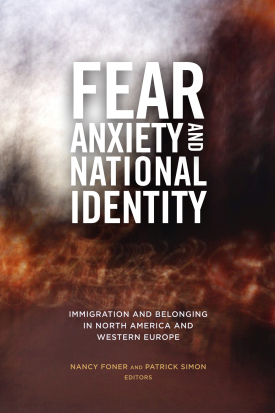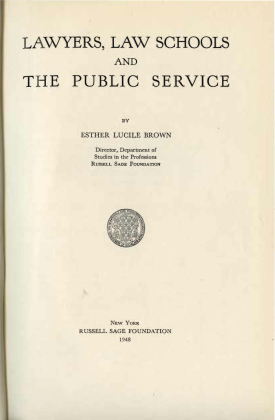Students from high-income families go to college at higher rates and are more likely to graduate than those from low-income families. This disparity has increased in recent decades. The factors that influence these post-secondary outcomes are varied, and include family circumstances (such as economic resources and family stability), school attributes (such as peer socioeconomic-status composition, teacher quality, and school resources), and neighborhood characteristics (such as crime orviolence).
Since 2008, 34 states have passed some form of voter identification law. Proponents of these laws claim that they are warranted because fraud is a real and potentially widespread phenomenon that could alter electoral outcomes and erode faith in democracy. Critics contend that these laws serve as a barrier that limits the legitimate participation of racial and ethnic minorities and other disadvantaged groups. To date, there is no conclusive evidence of the actual consequences of voter identification laws.

Fear, Anxiety, and National Identity
About This Book
Western European countries such as Germany, the Netherlands, and the United Kingdom have witnessed a significant increase in Muslim immigrants, which has given rise to nativist groups that question their belonging. Contributors Thomas Faist and Christian Ulbricht discuss how German politicians have implicitly compared the purported “backward” values of Muslim immigrants with the German idea of Leitkultur, or a society that values civil liberties and human rights, reinforcing the symbolic exclusion of Muslim immigrants. Similarly, Marieke Slootman and Jan Willem Duyvendak find that in the Netherlands, the conception of citizenship has shifted to focus less on political rights and duties and more on cultural norms and values. In this context, Turkish and Moroccan Muslim immigrants face increasing pressure to adopt “Dutch” culture, yet are simultaneously portrayed as having regressive views on gender and sexuality that make them unable to assimilate.
Religion is less of a barrier to immigrants’ inclusion in the United States, where instead undocumented status drives much of the political and social marginalization of immigrants. As Mary C. Waters and Philip Kasinitz note, undocumented immigrants in the United States. are ineligible for the services and freedoms that citizens take for granted and often live in fear of detention and deportation. Yet, as Irene Bloemraad points out, Americans’ conception of national identity expanded to be more inclusive of immigrants and their children with political mobilization and changes in law, institutions, and culture in the wake of the Civil Rights Movement. Canadians’ views also dramatically expanded in recent decades, with multiculturalism now an important part of their national identity, in contrast to Europeans’ fear that diversity undermines national solidarity.
With immigration to North America and Western Europe a continuing reality, each region will have to confront anti-immigrant sentiments that create barriers for and threaten the inclusion of newcomers. Fear, Anxiety, and National Identity investigates the multifaceted connections among immigration, belonging, and citizenship, and provides new ways of thinking about national identity.
NANCY FONER is Distinguished Professor of Sociology at Hunter College and the Graduate Center of the City University of New York.
PATRICK SIMON is Director of Research at the Institut national d’études démographiques (National Institute for Demographic Studies).
CONTRIBUTORS: Irene Bloemraad, Jan Willem Duyvendak, Thomas Faist, Nancy Foner, Gary Gerstle, Philip Kasinitz, Nasar Meer, Tariq Modood, Deborah J. Schildkraut, Patrick Simon, Marieke Slootman, Varun Uberoi, Christian Ulbricht, Mary C. Waters
Fear, Anxiety, and National Identity: Immigration and Belonging in North America and Western Europe
RSF Journal
View Book Series
Sign Up For Our Mailing List
Apply For Funding
The movement to hold schools "accountable," and debates about alternative schooling options, governance arrangements, and other educational reform efforts are all based on the assumption that school quality strongly influences its students’ educational outcomes. There is also a strong theoretical basis and some empirical support for expecting that a student’s neighborhood will influence his or her academic achievement.
The growth of the foreign-born population in the United States, and the dispersion of the new arrivals to new areas, presents the states with both opportunities and challenges. On the one hand, immigrants can revitalize declining communities and may provide a much-needed labor force. On the other hand, they can generate increased demand for public schools and other public services.
State efforts to respond to the challenges of immigration are complicated because federal law governs aspects of social welfare policy, identification policies, and deportation procedures.
Political science researchers have established a relationship between racial predispositions and political attitudes, such as opinions on welfare, in which the causal direction is commonly thought to be that an individual’s racial attitudes influence his or her views on welfare. The process by which these racial predispositions come to shape such political judgements and views is known as “racialization.” In the example of welfare, the more whites dislike blacks or stereotype them, the greater their antipathy toward welfare.
Professor Matthew Grossmann will examine the mechanisms by which high-income citizens influence policymaking. What are the routes through which high-income citizens and particular groups come to influence policy adoption? Why do public policy choices follow the opinions of the more affluent rather than the broader public?
About This Book
Published in 1948, this book is concerned with how the law school may be more effective in educating the many law-trained students who will eventually go on to work as legislators, judges, and policy-making members in government, or who, as lawyers outside the government, will nevertheless exert large influence over it. One of the most important questions is whether government lawyers are inadvertent policy-makers, and if so, how they make policy.
ESTHER LUCILE BROWN was director of the Department of Studies in the Professions at the Russell Sage Foundation.
Download
RSF Journal
View Book Series
Sign Up For Our Mailing List
Apply For Funding
Pagination
- Previous page
- Page 21
- Next page

